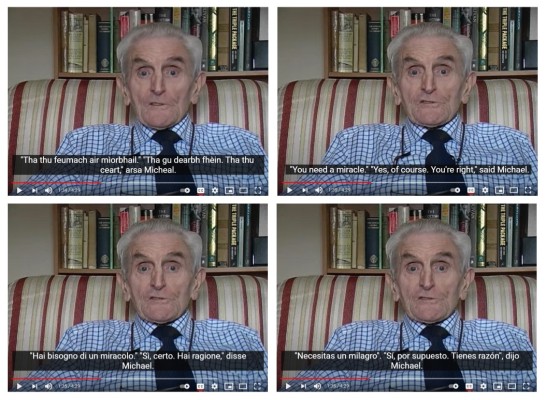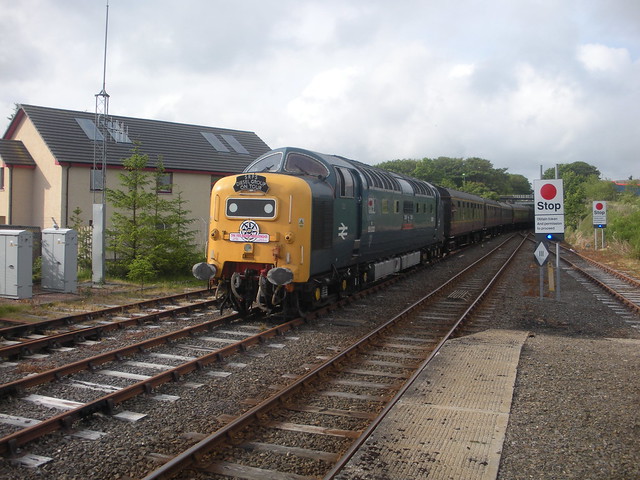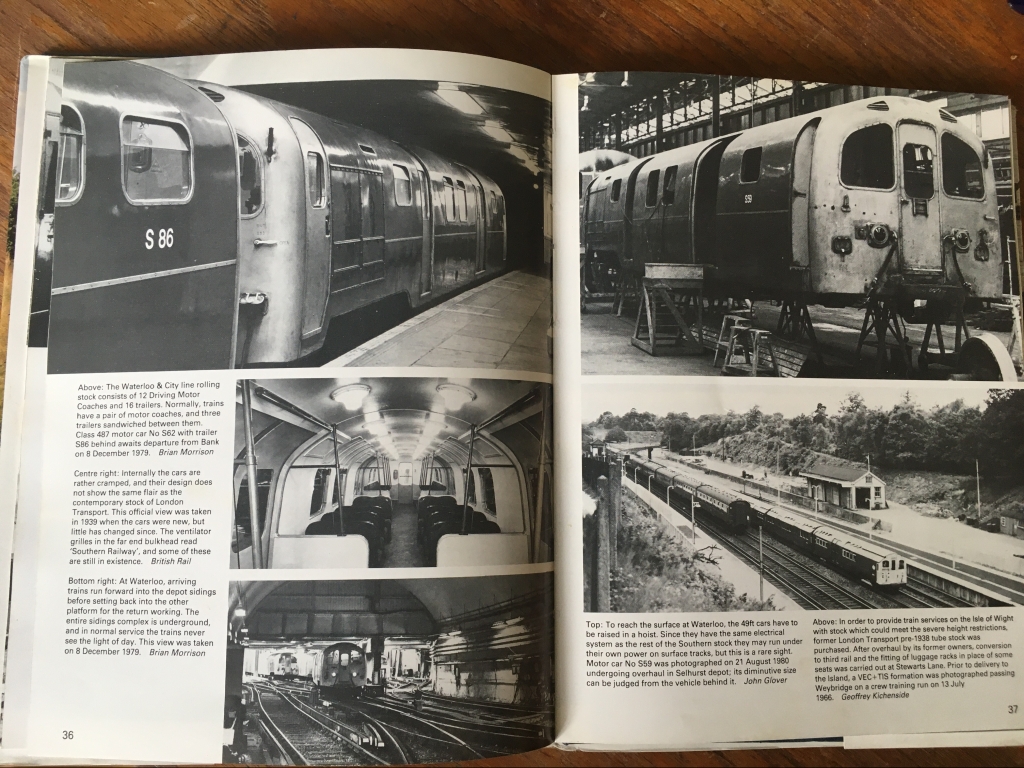Le lasairdhubh
This is an important question, not only because Gaelic has long been spoken as a network language in the south and the east of the country, but also because research now indicates that Gaelic has become a network language in all remaining traditional communities in the northwest as well.
In recent debates about the Gaelic revival in Scotland, one often hears arguments along the lines of: “If we don’t preserve Gaelic as a community language in the Highlands and Islands of Scotland, it will die out everywhere,” but the truth is, we have already passed that point; we passed it decades ago, in the 70s when many families in the remaining traditional communities stopped speaking Gaelic to their children in the home. Nowhere now in Scotland do find the density of speakers in all age groups required for community level transmission to function as it once did.
So is Gaelic doomed? Is Gaelic already ’dead’?
Well, in the first instance, many sociolinguists now agree that these biological metaphors for language vitality aren’t very helpful. They are super common in regular discourse in Gaelic revival circles, and I must confess, as a short-hand, that I use them too, but they can be misleading. There is no purely linguistic definition of what constitutes a “living” language. Many would say that a “real living language” is one that is spoken as the common language of all age groups in some territorial community somewhere, but plenty of very vital languages are not used in this way, so whether a language is considered living or dead is mostly an ideological question, rather than a material one.
Take an extreme example; take Latin. Most would call Latin a dead language, but Latin is still used every day around the world: in worship, as a creative language to write poetry and prose, you can go to summer camp in Latin, and while it has been a long time since Latin was transmitted as a family language, it was used for centuries in Europe as a lingua franca amongst diplomats and scholars, long after it ’died’ as a community language in the former Roman Empire.
Or to take a less extreme, more practical example: what about the Manx language? Are our Manx brothers and sisters speaking a ’dead’ language? The way some speak about the vitality of Scottish Gaelic, I would imagine that there are folk among us who would argue that they are, but I sure don’t think so. I’ll bet the kids at Bunscoill Ghaelgagh don’t think so either.
Further, more generally, it may be the fate of most minority languages around the world that, if they are maintained at all, they will maintained as networked languages. As things are going, in the very near future, it is possible that the only languages that will benefit from being used in territorial speech communities will be a few dozen mega-languages. If so, are all minority languages in the world then doomed?
I would argue: not if they are still used. For minority languages anyway, there is nothing magical about territorial speech communities that makes them more stable than networks. If it proves even possible, it will definitely take a lot of effort and resources to maintain Gaelic networks in cities and in rural areas of the Scottish mainland, but given how mobile we are as a society, how connected we are now with technology, and how powerful the ideology of Anglophone privilege is in the UK, it will also take a tremendous input of effort and resources to rebuild and then maintain Gaelic as a community language in Scotland’s islands. I am not saying we shouldn’t try, but if people hope that Gaelic as a territorial language will somehow exist in a more “natural” way than Gaelic as a networked language, they are not yet thinking clearly about the task we face.
So I would argue that the real question then is not whether Gaelic will ‘live’ or ’die’ as a network language, but can it be maintained as a network language into the future: as a language used in schools, in homes, at work, and socially amongst friends? Is that possible?
The short answer is, we don’t know, and anyone who makes definitive pronouncements one way or the other is speaking out of their Coire Bhreacain. However, I think there are reasons to be hopeful. The examples of Manx and Cornish make my hopeful, and there are other examples as well, but we need a lot more research. As Susane Romaine has written, “we understand more about how diversity is lost than about how it is maintained.” This question is critical, because networks may be the future of our language.
And please let me be clear. I am not at all arguing that we shouldn’t fight to strengthen Gaelic in traditional communities. We definitely should, but to do so, we have to understand clearly how the language is actually spoken, and what it will really take to maintain and strengthen it’s use. Gaelic is already a network language everywhere in Scotland. That is just a fact, and while I accept that Nis is not Edinburgh, and that different places will require different interventions, at the same time and in many ways, since Gaelic has become a networke language all over Scotland, the language maintenance requirements of traditional communities and urban networks are actually progressively converging rather than diverging over time.
Just one example of this is adult learning. Mention adult learning to most folk in the Gaelic revival, and I am sure they think first of networks in urban areas, but actually, if Gaelic is going to be maintained as a dense rural network language in the Islands, lots of adult learning will be required: to integrate incomers, to help parents with children in GME, and to welcome back those locals who either never got Gaelic or only partially acquired the language as children.
I am hopeful about Gaelic as a network language. I live in one such thick, rural Gaelic network in Sleat. Gaelic is the language I speak at home, at work, with Alasdair and Ruth at the Coop, with friends in the community, all day long. And yes, this network depends on the institutional support of the College and Bun-sgoil Shlèite, but similar institutional support can be replicated elsewhere. So then, an even better question is: can we come together and build the real open, grassroots movement required to win that same kind of institutional support for all our Gaelic communities wherever they are?
Tadhail air Air Cuan Dubh Drilseach
Powered by WPeMatico



 Anne MacInnes, from Callanish on Lewis, talks to Maggie Smith about her family connections to the Breasclete community and school, where Gaelic Medium Education was pioneered.
Anne MacInnes, from Callanish on Lewis, talks to Maggie Smith about her family connections to the Breasclete community and school, where Gaelic Medium Education was pioneered.




